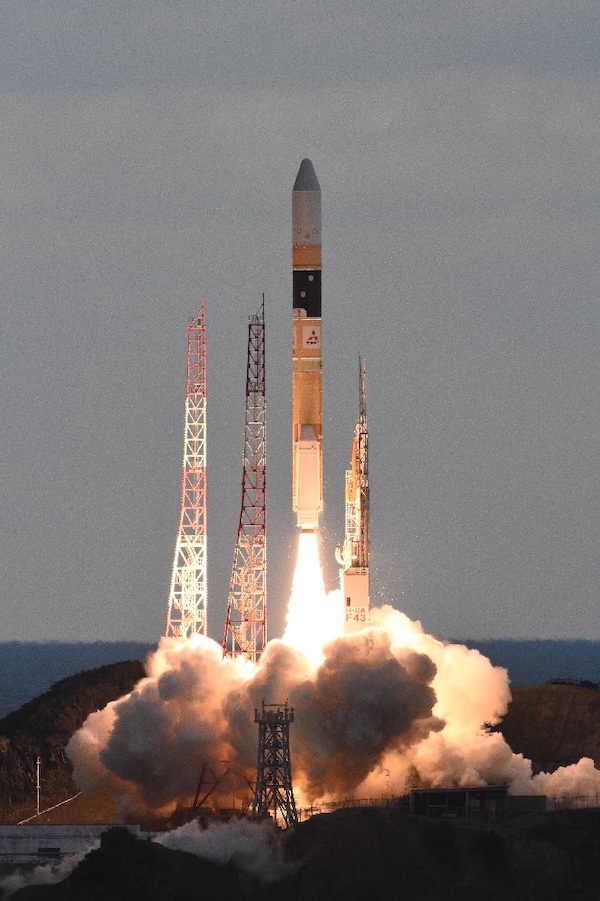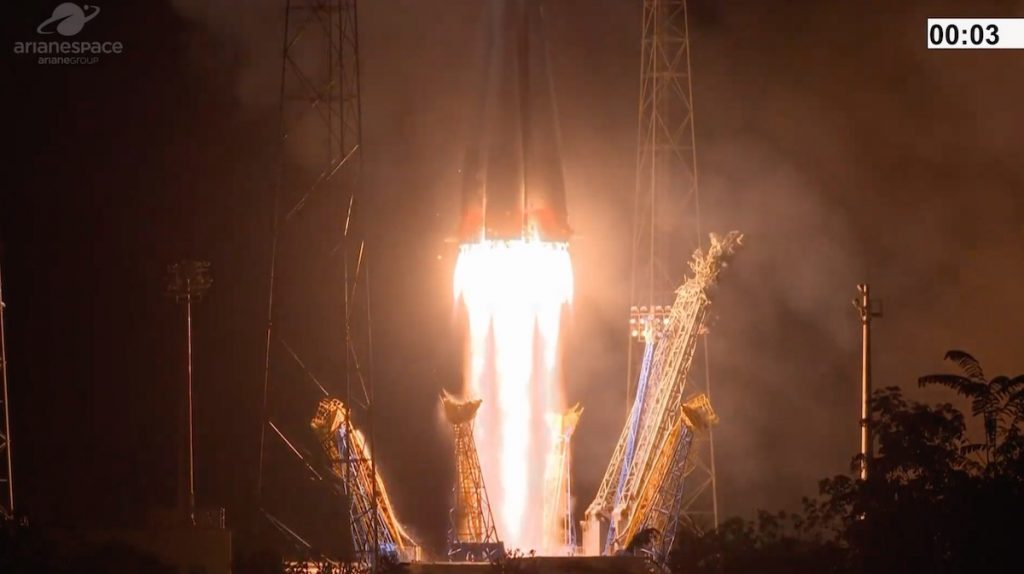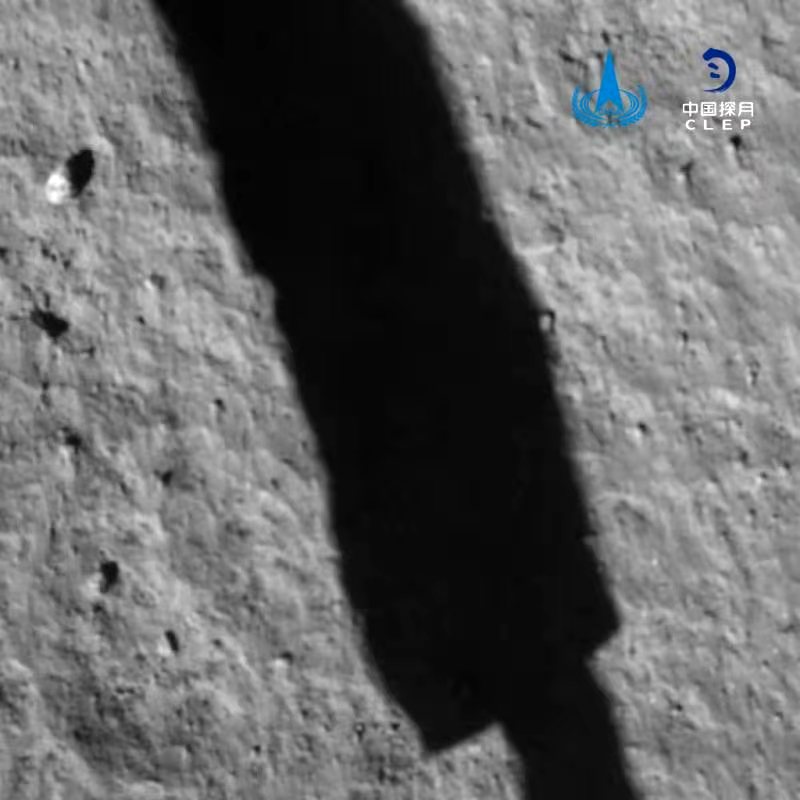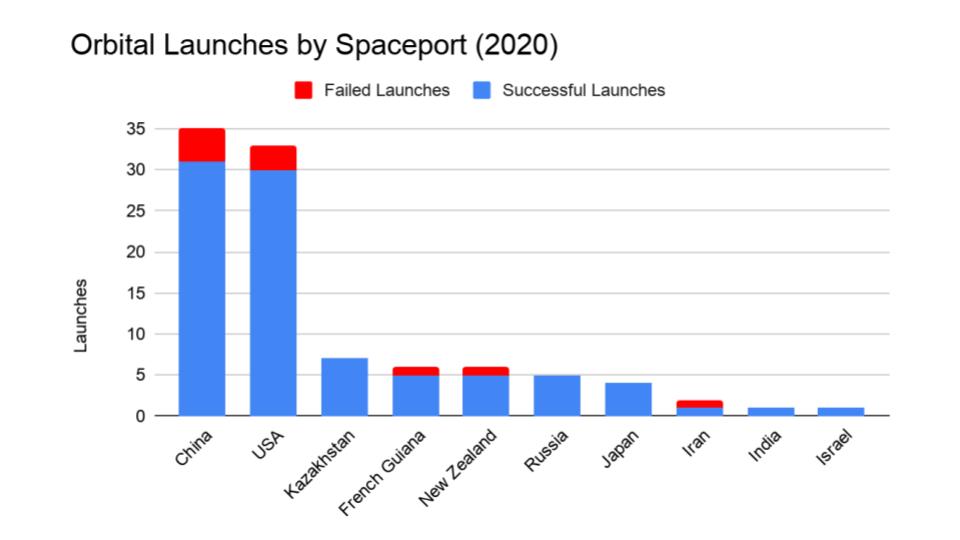Media
Summary
Join us for this week’s Rocket Roundup with host Annie Wilson as we look back at the launches that happened from the past week, including a Japanese launch and, finally, the Falcon Eye 2 launch for the UAE. Plus an update on Chang’e 5 lunar lander!
Transcript
Hello, and welcome to the Daily Space for today Wednesday, December 2nd, 2020. I am your host Annie Wilson. Most weekdays we’re here putting science in your brain. Usually, Wednesdays are for Rocket Roundup and today is no different, so let’s get to it, shall we?

First up, on the 29th of November at 07:33 UTC, Japanese Data Relay Satellite-1, also known as JDRS-1, was launched from the Tanegashima Space Center on an H-IIA 202 rocket. JDRS-1 is a data relay satellite for both military and civilian users. It will primarily provide downlink for the Japanese government’s IGS fleet of radar and optical reconnaissance satellites. The civil payload is a laser communications device developed by JAXA, the Japanese civil space agency. JDRS-1 was launched into a geostationary transfer orbit (GTO) orbit by the rocket. It will raise itself the rest of the way into geostationary orbit (GEO) over the course of a few weeks.
Our next launch, FalconEye 2, finally took off at 01:33 UTC on December 2 on a Soyuz-2 from the Guiana Space Centre in French Guiana. This was the fourth launch attempt, following multiple scrubs.
The last scrub was on November 30th due to problems with the ground system, specifically the telemetry receiver. This came after scrubs on the 28th and 29th because of the weather.
This satellite was originally supposed to have been launched on an Arianespace Vega, their small class launch vehicle. The customer, United Arab Emirates, had previously used Vega for the launch of FalconEye One — which unfortunately was the first Vega failure. It was switched to a Soyuz-2 for a launch this past spring, but a problem with the Fregat (the fourth stage of Arianespace’s Soyuz) caused a delay in that launch by a month and then it was pushed to the fall after a decision was made to completely replace the Fregat.

The failure of the FalconEye One launch was caused by a problem with the Vega’s 2nd stage, the Zefiro 23, that caused it to not make it to orbit.
This launch marks the 1,928th launch (both successes and failures) of an R7-derived Soyuz since 1957.
And now, an update on China’s Chang’e 5 lunar lander. It landed successfully landed on the Moon on December 1st at around 15:15 UTC.

The intended landing site was the Mons Rümker region, part of Oceanus Procellarum, also known as Ocean of Storms, on the Moon. Chang’e 5 was launched by a Long March 5 rocket, China’s heaviest operational rocket, a little more than a week ago.
State media initially announced live coverage of the landing, but coverage was pulled shortly before the start of the landing burn. Gradually, unofficial sources began to indicate that the landing was successful. After some more time, state media confirmed the landing success, with amateur radio trackers reporting receiving signals from the lander providing independent confirmation.
To wrap things up, here’s a running tally of a few spaceflight statistics for the current year:
- Toilets currently in space: 5 — 2 installed on ISS, 1 on the Crew Dragon, 1 on the Soyuz, 1 not yet installed
- Toilets burned up: 3
- Total satellites humans put into orbit: 1173 (includes those launched from other in-orbit craft, such as the ISS)
- Total satellites from launches: 1142
- Total Starlinks (this year): 833
- Total 2020 orbital launch attempts: 100 (including 10 failures)
Annie keeps track of orbital launches by where they launched from, also known as spaceports. Here’s that breakdown:

China: 35
USA: 33
Kazakhstan: 7
French Guiana: 6
New Zealand: 6
Russia: 5
Japan: 4
Iran: 2
India: 1
Israel: 1
Your random space fact for the week is that scientists used aurorae on Jupiter’s moon Ganymede to confirm the existence of a subsurface ocean.
Learn More
Japan launches joint military, scientific optical data relay satellite
- NASA Spaceflight article
- SpaceFlight Now article
- JRDS-1 info sheet (Gunter’s Space Page)
Following several delays, Soyuz finally launches FalconEye 2 for UAE
Chang’e 5 lands on moon, starts surface operations
Credits
Host: Annie Wilson
Writers: Gordon Dewis, Erik Madaus, Ally Pelphrey, and Annie Wilson
Audio and Video Editing: Ally Pelphrey
Content Editing by Beth Johnson
Executive Producer: Pamela Gay
Intro and Outro music by Kevin MacLeod, https://incompetech.com/music/


 We record most shows live, on Twitch. Follow us today to get alerts when we go live.
We record most shows live, on Twitch. Follow us today to get alerts when we go live.